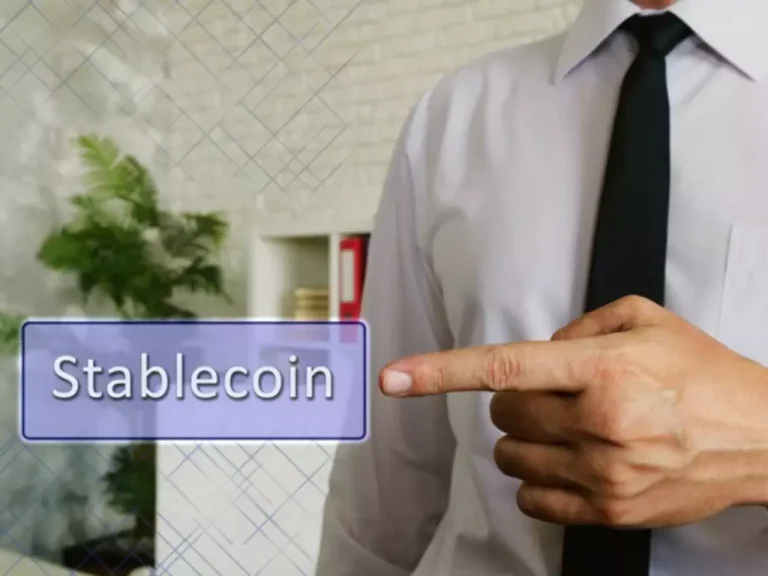In the realm of cryptocurrencies, the dynamics of “maker vs taker” roles play a pivotal role in maintaining a easily functioning buying and selling setting. Many exchanges generate a substantial portion of their income by charging buying and selling fees for matching users. This signifies that any time you create an order and it’s executed, you pay a small quantity in fees. However that amount differs from one trade to another, and it might additionally vary depending in your trading measurement and position. If you wish to sell an asset, you’ll have hassle promoting it at a good price as a end result of there isn’t as much demand. As a consequence, illiquid markets typically have a a lot larger bid-ask spread.

DMMs function similarly by posting buy and sell quotes according to strict parameters, nonetheless, they must adhere to even tighter controls they usually function from inside the change itself. Some of their duties are to make sure that the most effective price is all the time maintained, that each one trades are executed, and that there’s an orderly market. Many exchanges use multiple market makers who compete towards each other to supply the best purchase and sell quotes throughout quite a lot of securities. Nevertheless, others, such as the New York Inventory Change (NYSE), use what’s known as a chosen market maker (DMM) system.
By providing a two-way worth, market makers attempt to enable traders to execute transactions shortly Cryptocurrency wallet without waiting for a counterparty to seem. This fixed presence helps scale back spreads (the distinction between bid and ask prices), attempting to make it less expensive for investors to purchase or promote. Market makers attempt to generate potential alternatives from the unfold and the volume of trades they facilitate. Adjusting strategies, implementing threat management protocols and staying informed about market circumstances are important for minimizing these inherent challenges. The relationship between market makers and market takers is symbiotic; it is the cornerstone of efficient market perform.
Market makers revenue from the spread between the buy and sell prices of assets. By submitting a limit order on a centralized cryptocurrency trade like Binance or a peer-to-peer decentralized exchanges (DEX) like Komodo Pockets, you actively take part as a market maker. And when a taker is obtainable in, he takes some of that liquidity out of the market with a market order, which is executed immediately as a end result of it has the instruction to execute at the market value. If you’re a dealer, you’re both a maker or a taker, and you may be one or the opposite at different moments, buying and selling different devices. Makers and takers make potential the existence of the exchange in precept. The worth of any asset is the outcomes of an agreement between the client and the vendor.
By partaking with prices offered by MMs and the broader order book, takers facilitate the actual circulate of trades. This interaction maintains market activity and contributes to price discovery, the place the prevailing worth of an instrument is shaped by way of ongoing transactions. They work to make sure a counterparty is nearly always out there for traders wanting to buy or promote. This operate becomes notably essential during times of high market stress or volatility when natural liquidity might otherwise become scarce. A market maker (MM) is a monetary intermediary—often an institution—that immediately supplies liquidity to monetary markets. They achieve this by repeatedly quoting each a purchase and a sell worth for a given safety or instrument.

The Differences Between Market Makers And Market Takers
These actions continually attract the eye of small traders, as the actions of market makers often predict adjustments in market tendencies. Exchanges often incentivize market makers to supply liquidity, enhancing the user expertise and resulting in extra competitive market costs. Slim bid-ask spreads point out that the market is efficiently priced, providing merchants with favorable entry and exit costs, and enhancing the well being of the change. In the realm of crypto trading, the selection between roles, similar to being a market maker or partaking with present prices as a market taker, demands cautious consideration. Automated market makers leverage algorithms to repeatedly quote buying and selling costs, offering liquidity to the crypto market.
This proactive place distinguishes them from market makers, who play a more passive function by providing market liquidity via continuous quoting. Market makers and takers help stabilize cryptocurrency prices and help guarantee an change operates successfully and effectively. Makers quote honest purchase and sell costs for his or her assets, whereas takers buy at the price makers have quoted. Makers feesWhen a maker creates a restrict order, or quotes a purchase and promote price, it will get added to the order e-book and supplies the exchange with liquidity. In different words, the maker is making a market and permitting others to make trades, so that they obtain a share of the charge that the taker pays when executing a market order. This allows them to carry out their strikes extra shortly than if they needed to negotiate their very own prices.
- Because they play such an important function, and are often appointed by inventory exchanges and other financial institutions, market makers should adhere to strict parameters.
- They work to make sure a counterparty is almost always available for merchants wanting to purchase or sell.
- There is an idea of a “professional market maker” – a bidder/seller who typically helps cut back the spread (difference) between buy and sell orders.
- Market makers continually present liquidity to the market by always offering purchase and promote value quotes, giving traders, namely market takers, the chance to commerce immediately.
- Charge charges for maker and taker orders could range based on the month-to-month trading volume and eligibility for fee reductions.
- Takers, then again, place orders instantly purchased or crammed, consuming one of the best obtainable value on the orderbook for the given order measurement.
These costs embody the bid-ask unfold and often particular “taker fees” for consuming liquidity. These maker and taker fees are typically higher for takers than for makers. Market makers predominantly utilise limit orders to post their bid and ask costs market maker vs market taker. These orders are not meant for quick execution; they rest on the order guide until matched by a market taker. This technique permits market makers to strategically manage their stock and earn the bid-ask unfold.
On the one hand, their actions can create revenue opportunities when you analyze their behavior correctly. On the opposite hand, whales on the stock trade can use cunning methods, corresponding to price manipulation through fake orders or speculation. Such actions can confuse traders and trigger losses for many who don’t perceive market alerts. Those who “take the market” are the everyday traders who pay the going price for an asset with the expectation that it is going to enhance in worth, both instantly or over time. It’s possible that their buying and selling approaches could differ, as will the strategies they make use of to review the markets and execute trades.
Market Makers And Market Takers Defined
On the other hand, market takers in crypto leverage flexibility and responsiveness to swiftly capitalize on market alternatives. Whereas market makers contribute to market stability, market takers actively navigate the markets, responding promptly to present conditions. Market takers act rapidly and swiftly, putting market orders to buy or sell at the best out there prices.
Moreover, certain exchanges could have distinctive fee models or fee reductions for specific trading pairs. While every platform has its personal insurance policies and fee construction, all exchanges are incentivized to draw merchants to their platforms. This is why market makers often enjoy decreased fees from exchanges owing to their pivotal role in supplying liquidity. An order book serves as a real-time, dynamic ledger that shows all of the buy (bids) and promote (asks) orders for a selected asset, corresponding to a cryptocurrency, at various value ranges. Market liquidity is considered one of the most essential elements of a highly environment friendly market. A market with high liquidity is one the place belongings could be purchased and offered with ease at a fair worth.

In Contrast To market makers, market takers don’t actively set costs; as an alternative, they like to transact at costs established by market makers. This dynamic permits for transactions to happen quickly for buyers and sellers, facilitated by the prices provided by market makers who present liquidity. This signifies that market makers help keep price stability by balancing provide and demand. The bitcoin market maker plays an essential position in the bitcoin market, offering liquidity and stability. Market makers actively contribute to market liquidity by quoting costs and making a market, whereas market takers accept existing market costs to execute trades. The interaction between makers and takers is crucial for the healthy functioning of monetary markets.
Market Makers Vs Market Takers: Key Differences
Generally, exchanges reward makers with decrease fees as they provide liquidity. In contrast, takers make use of this liquidity to easily purchase or promote property. Market makers vs takers are key participants in the crypto market, and this impacts the liquidity and stability of the market. It is necessary for merchants to grasp the which means of market-making and its impression on worth dynamics.
The vendors – market makers in this state of affairs – have stands stocked with numerous fruit and veggies to promote to customers, however they also buy produce from the market goers (customers). For example, they might promote an apple for $2, and repurchase an apple for $1. In doing so, each vendor provides liquidity to the market and may compete with each other to supply one of the best prices. Market makers enhance market depth, providing larger liquidity for other traders on the exchange. Takers, however, place orders immediately bought or filled, consuming the most effective available price on the orderbook for the given order size.
In many circumstances, takers pay greater fees than makers, as they don’t present the liquidity that makers do. A market order is an instruction to buy or promote a certain amount https://www.xcritical.com/ of a cryptocurrency at the present market price. Market orders are utilized by merchants who prioritize instant execution over the worth at which the commerce is executed. As we’ve outlined above, the largest advantage of makers is that they provide liquidity. This not only attracts merchants to an exchange, nevertheless it additionally ensures that they can execute the traders they want to make on the proper value. They play an incredibly essential position in ensuring an exchange can operate effectively and efficiently.


